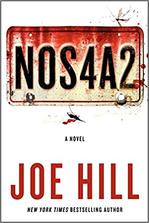The 25 Best Horror Novels of the 2010s

Horror has had an excellent decade in print. If the 2000s saw the genre begin to climb out of its sobering ‘90s slump, the 2010s found it flourishing in both the small-press realm and at major publishers, as authors like Joe Hill and Lauren Beukes reminded the big leagues that there is money to be made in scaring diligent readers. Horror grandmaster Stephen King contributed in no small part to the upswing, thanks to a resurgence of interest in his back catalog and a steady stream of new releases. The rise of digital reading and dedicated imprints helped foster a novella boom, and marginalized voices made massive headways, especially in Young Adult literature and cross-genre mash-ups.
That’s not to say that horror has reached anything like gender or racial parity. The list below is still dominated by straight white cis men, but the last few years give ample reason to expect that similar rankings will shift as more diverse voices get a seat at the terror table.
As this decade comes to a close, however, we want to celebrate the horror novels that impacted us during the last 10 years. This list includes 25 novels published in English for the first time between 2010 and September 2019, and we’ve limited it to one book per author. We’ve made one exception for a short-story collection, but we otherwise stuck to novellas and full-length prose. “Horror” is a wildly subjective genre, and we invite debate over any and all lines we’ve drawn while assembling the list.
Whether or not every book below can be neatly shelved in the horror section, they all thrilled, chilled and delighted us this decade. We think they’ll spook you, too.

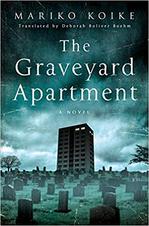 Honorable Mention: The Graveyard Apartment by Mariko Koike, translated by Deborah Boliver Boehm (1986 in Japanese, 2016 in English)
Honorable Mention: The Graveyard Apartment by Mariko Koike, translated by Deborah Boliver Boehm (1986 in Japanese, 2016 in English)
Mariko Koike’s 1986 novel The Graveyard Apartment, which finally received an English translation in 2016, precedes the “J-horror” boom led by Ring and its adaptation. It’s not quite eligible for this list due to its original release date, but it still earns an honorable mention. The novel follows a young family who moves into a seemingly ideal apartment building that’s bordered on three sides by a graveyard, a crematorium and a Buddhist temple. As with many Japanese horror staples, Koike’s tale savors slowly mounting dread and vengeful ghosts. The Graveyard Apartment is a fascinating look at the Japanese horror scene in the ‘80s and a welcome addition to this decade’s English-language landscape. —Steve Foxe

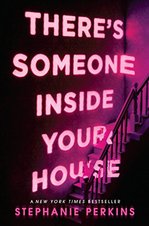 25. There’s Someone Inside Your House by Stephanie Perkins (2017)
25. There’s Someone Inside Your House by Stephanie Perkins (2017)
The rural Nebraska life that Stephanie Perkins invokes in this contemporary Young Adult slasher is eerily on the mark; anyone with first-hand knowledge of being a teen in the wide-open country will feel unsettled long before high school students start dropping around new girl like bloody horseflies. Even if your teen years weren’t spent on the high plains, There’s Someone Inside Your House strikes such a solid balance between taut mystery building, gruesome kill scenes and careful character work (read: smooches, diverse identity representation and a deep dive into the killer’s psyche) that readers with the lowest tolerance for horror story violence and gore will get a satisfying thrill. —Alexis Gunderson

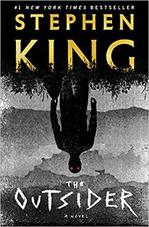 24. The Outsider by Stephen King (2018)
24. The Outsider by Stephen King (2018)
It’s hard to say if any of Stephen King’s recent novels stand up to his ‘70s and ‘80s hot streak, but novels like Mr. Mercedes, Revival and 11/22/63 prove that he’s absolutely still “got it.” The Outsider, soon to be an HBO series, is a tough one to place: its first half is among the most chilling work King has ever produced, as a small-town little league coach is arrested, under ironclad evidence, for a reprehensible murder—despite equally undeniable evidence that he was nowhere near the victim at the time of the attack. The Outsider eventually explains too much by the time its finale comes around, but the good far outweighs the oversharing in this chilling mystery. —Steve Foxe

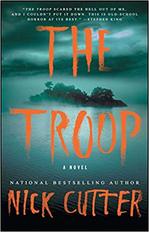 23. The Troop by Nick Cutter (2014)
23. The Troop by Nick Cutter (2014)
The Troop is gross. Boasting a cover blurb from Stephen King that proclaims the book “old-school horror at its best,” Nick Cutter’s debut horror novel relishes its roots in the often-schlocky ‘80s horror paperback boom. A scoutmaster takes his troop on an annual island camping trip at the worst possible time, as a dangerously emaciated man stumbles ashore and passes along an unwelcome hitchhiker that slowly ravishes the scouts from the inside out. Cutter, who writes his horror novels under a pseudonym, takes sick satisfaction out of describing the gory fates of almost every character in the novel, animal or human, providing respite only in the form of supplementary newspaper and research articles scattered throughout à la Carrie. The Troop isn’t for those with sensitive stomachs, but it’s an excellent modern torchbearer for gory tales of yore. —Steve Foxe

 22. The Lamb Will Slaughter the Lion by Margaret Killjoy (2017)
22. The Lamb Will Slaughter the Lion by Margaret Killjoy (2017)
Margaret Killjoy’s The Lamb Will Slaughter the Lion, which kicks off a series of novellas starring protagonist Danielle Cain, takes place in a punk anarchist commune where newcomers are asked about their preferred pronouns and everyone shares everything. Unfortunately, one of the things the town of Freedom, Iowa, shares is a blood-red, three-antlered spirit deer that’s beginning to turn on its summoners. Killjoy’s prose is sharp, her characters fiercely modern and her grasp on folk horror unyielding. For a subgenre so often stuck in the past, The Lamb Will Slaughter the Lion is an excellent example of the strength of folk horror set in the cutting-edge now, from voices too often underrepresented in the horror mainstream. —Steve Foxe

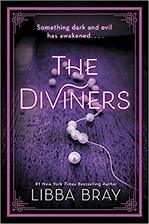 21. The Diviners by Libba Bray (2012)
21. The Diviners by Libba Bray (2012)
From the serial killer ghost in the first book to the maligned spirits trapping people their sleep in the second to the possessed asylum doctor terrorizing his ward in the third, Libba Bray’s 1920s-set Diviners series delivers no end of unhinged ghosts and demons. Bray is a sharp enough storyteller that these terrors would be satisfying enough on their own, but add in a bright-eyed radio star, a flame-throwing flapper, a smart-talking pickpocket, a pair of young brothers from Harlem, a pair of elderly witch sisters from Virginia, an antisocial dreamwalker from Chinatown, a terminally cheerful gay piano player from New Orleans, a cabal of international anarcho-socialists and a narrator deeply invested in interrogating the moral and contradictions baked into the story of America, and you’ve got the four-dimensional American horror experience of the decade. —Alexis Gunderson

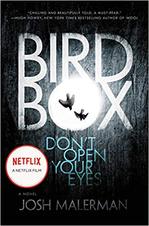 20. Bird Box by Josh Malerman (2014)
20. Bird Box by Josh Malerman (2014)
With your eyes closed and your imagination unfettered, you can envision creatures whose monstrosity knows no bounds. Author Josh Malerman manifests an apocalypse of the obscured in Bird Box, in which undiscovered entities start appearing around the world and just one glance of their grotesquery drives people to suicide. In the book’s unforgettable introduction, our protagonist travels down a river with black fabric knotted around her eyes, shepherding two similarly blinded four-year-olds, rowing their way to an uncertain sanctuary while any sound they hear could very well be one of these monsters sloshing ever closer to the bow of the boat. (Just forget about the Netflix adaptation.) —Jeff Milo

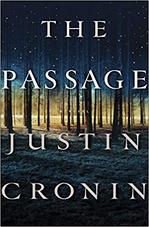 19. The Passage by Justin Cronin (2010)
19. The Passage by Justin Cronin (2010)
The Passage is often misrepresented as merely a vampire novel—or a zombie novel or a post-apocalyptic contagion novel—but it’s so many things at once. Terrifying throughout its suspenseful crescendos, it combines the disorientation of 28 Days Later, the life-or-death urgency of The Walking Dead and even some of the superhuman dazzle of X-Men. As the start of a trilogy, its scope is admittedly grand; this book chronicles 90 years in which colonies of healthy humans must fight against infected humans turned vampiric. The Passage boasts a meticulous attention to detail, effectively raising heart-rates as we follow characters who are being hunted by man and monster alike. —Jeff Milo

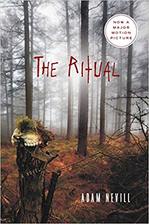 18. The Ritual by Adam Nevill (2012)
18. The Ritual by Adam Nevill (2012)
You would think that folk horror, which relies on remote places and forgotten practices, would fall out of favor in a 24/7-connected world, but works like director Ari Aster’s Midsommar and novelist Adam Nevill’s The Ritual prove that pagan rites can always generate a chill. Nevill’s tale follows a foursome of British pals hiking through the forests of Sweden, who soon come across unusual artifacts, a desecrated church and black-metal teenagers who are too into their mythological inspirations. A few disembowelings and a botched human sacrifice later, The Ritual crescendos into a memorable Norse creature feature that will have you looking twice at the goats in your life. —Steve Foxe

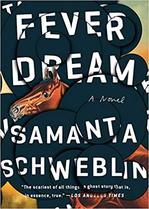 17. Fever Dream by Samanta Schweblin, translated by Megan McDowell (2014 in Spanish, 2017 in English)
17. Fever Dream by Samanta Schweblin, translated by Megan McDowell (2014 in Spanish, 2017 in English)
The too-clever remark that wiggles its way into almost every review of Samanta Schweblin’s Fever Dream is that the novella’s title is incredibly accurate. Translated from the original Spanish by Megan McDowell, the very act of reading this 192-page unfolding tragedy is disorienting, as Schweblin plays masterfully with unreliable narrators and withheld information. We know there is a woman, a boy and a poison, and just about every other detail is up for debate. Is Fever Dream a supernatural ghost story or a cautionary tale of parental trauma? You may need to read it twice to decide for yourself. —Steve Foxe

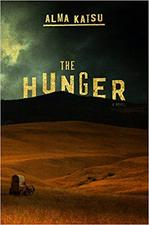 16. The Hunger by Alma Katsu (2018)
16. The Hunger by Alma Katsu (2018)
Cannibalism remains one of the ultimate taboos, which is why the real-life tragedy of the ill-fated Donner Party is still such a potent inspiration for modern storytellers. Alma Katsu, like Dan Simmons a few spots farther down this list, uses historical record as the basis for a supernatural thriller, as she empathetically fleshes out (no pun intended) the stories of desperate travelers crossing a deadly route in search of a better life. We all know how the actual Donner expedition turned out, but Katsu suggests an alternative explanation, in which a sinister presence just outside of the campfire’s light had something to do with the stomach-churning conclusion to the well-known story. —Steve Foxe

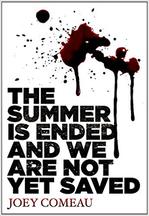 15. The Summer Is Ended and We Are Not Yet Saved by Joey Comeau (2013)
15. The Summer Is Ended and We Are Not Yet Saved by Joey Comeau (2013)
Joey Comeau’s first horror outing, One Bloody Thing After Another, is perhaps creepier and more unsettling than this summer-camp slasher. But The Summer Is Ended and We Are Not Yet Saved gets the nod for importing the genre from film into prose while layering in subtle, smart commentary on our thirst for teen blood. Eleven-year-old Martin is used to entrails—his mother does special-effect makeup for horror movies—but would like to keep his inside of his body. A maniac employed at his bible camp has other intentions. The title of Comeau’s previous novel would have worked here just as well: the gory killings are one bloody thing after the other, stacking up as a reminder that we’ve created a prolific genre around watching kids get murdered in inventive ways. —Steve Foxe

 14. Mongrels by Stephen Graham Jones (2016)
14. Mongrels by Stephen Graham Jones (2016)
Stephen Graham Jones has been a genre mainstay for years, pumping out a high volume of excellent short stories, under-the-radar novels and nonfiction about horror. But he finally broke out in a bigger fashion with Mongrels, a novel-length expansion of a short story that previously appeared in his collection After the People Lights Have Gone Off. Melding the werewolf myth with contemporary Native American anxieties around belonging, generational trauma and colonialism, Jones hangs all of these lofty themes on a heartfelt coming-of-age story, as an unnamed young man looks forward to finally transforming into a hirsute beast like the rest of his fractured family. —Steve Foxe

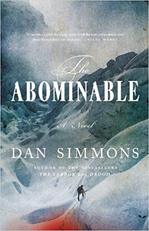 13. The Abominable by Dan Simmons (2013)
13. The Abominable by Dan Simmons (2013)
Dan Simmons survived the ‘80s horror bust just fine, spending much of the ‘90s on his Hyperion Cantos sci-fi tomes before finding renewed horror success in this millennium with Drood, The Terror and The Abominable, an absolute mountain of a novel that happens to be set on one, too. As with The Terror before it, The Abominable mines real historical events and geographic extremes to populate its intimidating page count with scares straight out of real life—and that’s before factoring in the most famous cryptozoological specimen to ever claim the adjective “abominable” ahead of its name. Whether or not you appreciate Simmons’ (over)commitment to historical detail, this summit is worth undertaking. —Steve Foxe

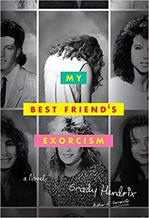 12. My Best Friend’s Exorcism by Grady Hendrix (2016)
12. My Best Friend’s Exorcism by Grady Hendrix (2016)
Grady Hendrix is building a brand: gimmicky on the outside, surprisingly scary on the inside. Horrorstör, his 2014 horror breakthrough, plopped readers into a haunted faux-IKEA full of torture instruments—beyond what the real-life stores already stock. His follow-up, My Best Friend’s Exorcism, dials back the meta-factor; aside from the yearbook-style packaging, this tale of ‘80s gal pals dealing with a demonic intrusion could easily a have been a paperback original during horror’s boom period—and that’s a compliment. Abby and Gretchen are best friends for life on the eve of the first Bush presidency…until Gretchen gets lost in the woods and comes back different. Abby, already an outcast in her swank private school, faces as much peer pressure as she does pea soup in her quest to cleanse her best friend’s soul. —Steve Foxe

 11. The Croning by Laird Barron (2012)
11. The Croning by Laird Barron (2012)
Laird Barron is something of a horror author’s horror author, whose work in cosmic terror speaks to a subset of genre fans but goes unfairly overlooked by readers who think Lovecraft’s influence begins and ends with tentacled monstrosities. Known best for his shorter fiction, Barron hit a new high with his first novel, The Croning, a carefully paced descent into incomprehensible madness. Protagonist Donald Miller is, like many of cosmic horror’s most famous protagonists, an academic poking at the edges of the unknown, but Barron doesn’t merely retread familiar ground. The Croning opens with a savage new spin on the Rumpelstiltskin myth, and that’s hardly the last surprise Barron has in store for readers in this unpredictable, rewarding read. —Steve Foxe

 10. Savaging the Dark by Christopher Conlon (2014)
10. Savaging the Dark by Christopher Conlon (2014)
Christopher Conlon’s all-too-possible Savaging the Dark shares a premise with Alissa Nutting’s controversial Tampa, but the differences in execution are what makes this novel truly horrific and Nutting’s more of a pitch-black comedy. Conlon’s narrator, Mona Straw, slowly unravels while carrying out an affair…with her 11-year-old student. Whereas Tampa introduced an admitted predator from the first page, Conlon takes care to build a believable case for how Mona justifies her taboo actions, even as her control of the situation—and her sanity—slip out of her grasp. Of all the novels on this list, Savaging the Dark may be the scariest if only because of its plausibility. —Steve Foxe

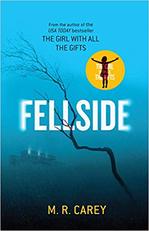 9. Fellside by M.R. Carey (2016)
9. Fellside by M.R. Carey (2016)
M.R. Carey gained legions of new fans with the deserved success of The Girl With All the Gifts, which puts a new spin on [mild spoiler] the zombie genre but isn’t quite as all-out scary as his follow-up, Fellside. The elevator pitch is “Orange is the New Black with a ghost,” and Carey lives up to his initialed namesake M.R. James in constructing the haunting, near-gothic atmosphere of a British women’s penitentiary inhabited by more than the living. For Jess Moulson, accused child-killer, the ghost may be her only ally in a fight for survival against the prison’s more aggressive residents—and her quest to do right by the spirit layers on surprising twists until the very end. —Steve Foxe

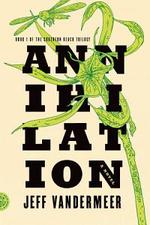 8. Annihilation by Jeff VanderMeer (2014)
8. Annihilation by Jeff VanderMeer (2014)
If you’ve seen the well-received film adaptation of Jeff VanderMeer’s Annihilation but have never picked up the source material, you’re missing out on one of the most unique horror experiences of the last decade. The movie retains many of VanderMeer’s central themes, but it doesn’t come close to capturing the overwhelming sense of the uncanny and the unknown the swallow up the his Southern Reach Trilogy of novels. Four unnamed scientists enter Area X, where plants and animals behave…differently. Alex Garland’s film adaptation has some unforgettable imagery—the bear!—but the infinite canvas of imagination provided by prose gives way to more ambiguous, unsettling nightmares waiting to be discovered. —Steve Foxe

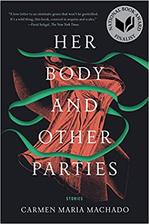 7. Her Body and Other Parties by Carmen Maria Machado (2017)
7. Her Body and Other Parties by Carmen Maria Machado (2017)
Carmen Maria Machado’s debut short story collection defies genre labels—enough so that we’re making an exception to this list’s novel requirement. In eight remarkable, haunting stories, Her Body and Other Parties dances from comedy to sci-fi to horror and back—and the trip leaves a mark. It’s rare to discover an author who can catalyze a reader’s laughter and fear in mere pages, but Machado succeeds again and again, placing herself alongside names like Angela Carter, Kelly Link, Helen Oyeyemi and Karen Russell when it comes to genre-bending fiction with a dark bent. In short, this gloriously engaging and utterly queer collection is necessary reading. —Frannie Jackson and Steve Foxe

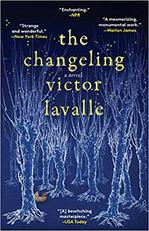 6. The Changeling by Victor LaValle (2017)
6. The Changeling by Victor LaValle (2017)
It’s easy to pin down Victor LaValle’s consistent inspirations but impossible to predict where he’ll pursue the paths he undertakes. In novels like The Devil in Silver and The Ballad of Black Tom, LaValle explores a Black perspective all too rarely seen in horror. And in The Changeling, he folds in a dizzying brew of other nuanced themes, from post-partum depression to Nordic fairy tales to classism and immigration in New York City. When Apollo Kagwa’s wife does the unthinkable after the birth of their son, he undertakes a journey across the five boroughs that feels infinitely larger. If you think the title gives away the book’s twists and turns, think again—and then read it for yourself, along with the rest of LaValle’s impressive bibliography. —Steve Foxe

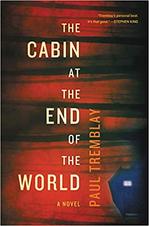 5. The Cabin at the End of the World by Paul Tremblay (2018)
5. The Cabin at the End of the World by Paul Tremblay (2018)
Paul Tremblay’s first two horror novels, A Head Full of Ghosts and Disappearance at Devil’s Rock, refuse to coddle readers by confirming whether or not their central paranormal happenings happened. The Cabin at the End of the World finds Tremblay teasing that question out nearly cover to cover. Seven-year-old Wen and her parents, Eric and Andrew (some of the only prominent gay protagonists in modern mainstream horror fiction), take what should be an idyllic vacation in a remote cabin. Four strangers show up wielding unusual weapons and present the family with a horrible decision loaded with impossible stakes. The Cabin at the End of the World is so painfully tense that it’s best to read its 293 pages straight through. Just don’t expect easy answers waiting for you once it’s over. —Steve Foxe

 4. Little Star by John Alvide Lindqvist, translated by Marlaine Delargy (2010 in Swedish, 2012 in English)
4. Little Star by John Alvide Lindqvist, translated by Marlaine Delargy (2010 in Swedish, 2012 in English)
Despite two stellar film adaptations of his vampire novel Let the Right One In, Stephen King comparisons take up more real estate on Swedish author John Ajvide Lindqvist’s American book covers than does his own name. With shades of Carrie, Little Star does little to dissuade that similarity. Two young girls, one extraordinary and one suffocating under her own feelings of mediocrity, connect online and form a friendship that will have terrible consequences. Lindqvist taps into the modern-day fears that drive adolescent anxiety—less locker room, more Internet comment section—and stretches them out to their most disturbing logical conclusion. Despite a suggestion of the supernatural, it is the violence committed by ordinary young people that will stick with you long after you’ve finished Little Star. —Steve Foxe

NOS4A2 represents a turning point for Joe Hill, as his own career became established enough that he loosened up about his parentage, resulting in a novel that blends the best of Hill’s distinct style with his father’s influence—and the most quintessentially frightening take on Christmas in modern memory. In the novel, both Victoria McQueen and Charlie Manx can slip out of time and space when they ride the right vehicle: Vic can find lost things on her rickety bike, and Manx can journey to “Christmasland” in his vintage Rolls-Royce Wraith. Beyond the cheery name and amusement-park shine, Manx’ Christmasland is the last place good little boys and girls want to end up, and Vic is the only child who escapes a ride on the Wraith. Much like Santa himself, Manx never forgets a child, and when Vic is too old for his tastes, Vic’s son will do. —Steve Foxe

 2. The Shining Girls by Lauren Beukes (2013)
2. The Shining Girls by Lauren Beukes (2013)
The Shining Girls is a serial-killer novel unlike any other, as Harper Curtis discovers a house in Depression-era Chicago that opens its doors to other times—and comes with a kill list of “shining girls” destined to die at his hand. Kirby is the final name on the list, and the only one who survives Harper’s first murder attempt. As in her exceptional follow-up, Broken Monsters, South African novelist Lauren Beukes weaves together a diverse cast of characters and just enough science fiction to complicate her premise without distracting from the horror at hand. The Shining Girls is a stunning reinvention—and reclamation—of the “Final Girl” trope, and one of the most remarkable horror novels of the decade. —Steve Foxe

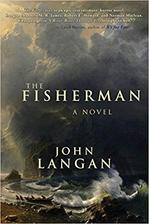 1. The Fisherman by John Langan (2016)
1. The Fisherman by John Langan (2016)
There is so much about John Langan’s The Fisherman that shouldn’t work. Cosmic horror is too often a bloated, derivative subgenre; the novel features nesting stories, jumping through time; and the central emotional heft relies on men grieving women who have little autonomy of their own. And yet, The Fisherman succeeds on every conceivable level, wringing dread out of the all-too-real (cancer, a tragic car accident) and the nearly incomprehensible (vast seas roiling with limbs, monsters of unthinkable scale rising from the dark depths). Langan’s narrative loops and swerves, but he sustains the voice of a secondhand tale told over a campfire and never loses sight of the shattering pain that comes with loss—the kind of loss that can drive men to do dark, terrible things. It took Langan, an accomplished short-story author, over 10 years to write The Fisherman, but don’t be surprised if he steals the top spot on next decade’s list, too. —Steve Foxe

For more best of the decade book coverage, check out our lists of the best novels, best fantasy novels, best memoirs and best Young Adult novels of the 2010s.
